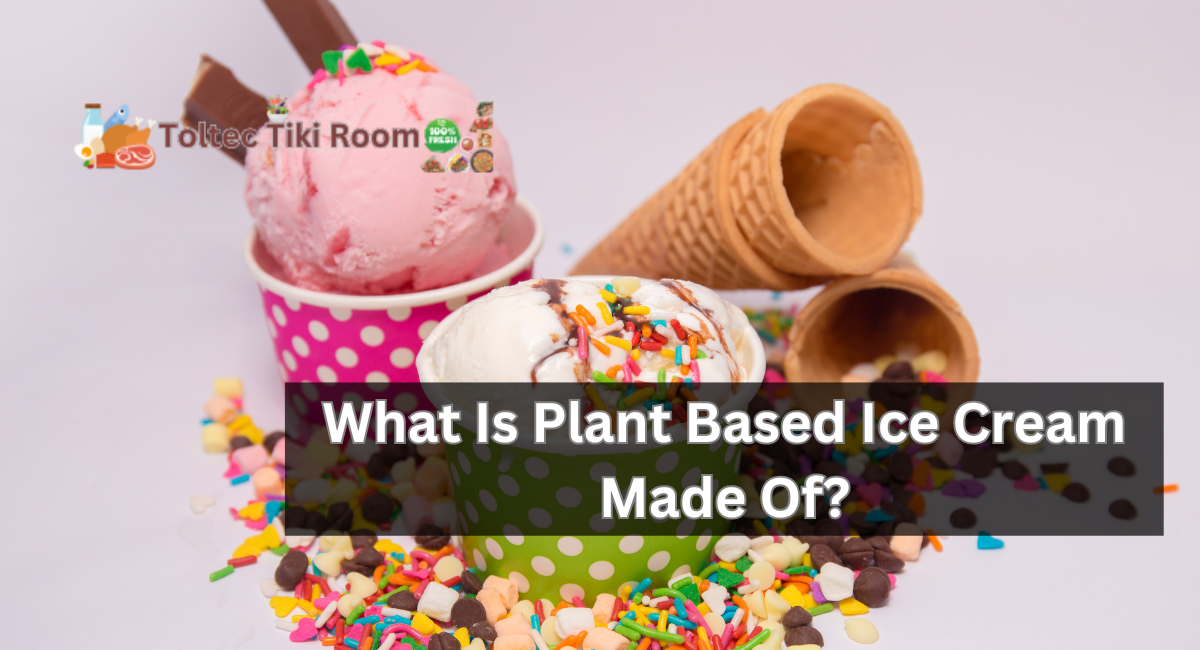Ice cream is a classic dessert that individuals of all ages adore. Although conventional ice cream is predominantly produced using dairy products, an emerging trend is plant-based ice cream. This substitute not only accommodates individuals who have dairy allergies or lactose intolerance but also attracts those in search of a confection option that is both ecologically sustainable and morally sound. This article will discuss the composition, nutritional value, and contrast of plant-based ice cream with conventional dairy ice cream.
Vegan Ice Cream
This recipe for vegan ice cream is certainly the best. Featuring an ideal ice cream consistency, it is velvety and buttery. Without a doubt, the dairy is an essential component of this delectable delicacy.
Time
- Prep Time: 1hour
- Total Time: 1hour
Ingredients
For the Homemade Cashew Milk:
- 1 Cup Raw Cashews (150g) Soaked in Hot Water for One Hour
- 1 Cup + 2 Tbsp Water (270ml)
For the Ice Cream:
- 2 Cups Homemade Cashew Milk (480ml)
- 1 Cup Coconut Milk (240ml) Canned, Full Fat, Unsweetened
- 1 Cup White Granulated Sugar (200g)
- ¼ Cup Water (60ml)
- ¾ Cup Cacao Butter (100g) (Finely Chopped)
- ¼ Cup Coconut Oil (55g)
- 1 Tsp Salt
- 2 Tsp Vanilla Extract
Instructions
- Freeze the bowl for your ice cream machine the day before you intend to use it to create ice cream.
- Construct your cashew milk at home. Cashews should be added to a receptacle. After thoroughly submerging the ingredients in boiling water, allow them to soak for one hour. Once the cashews have drained for one hour, combine them with one cup plus two tablespoons of fresh, cold water in a blender container. Blend until the mixture is silky and creamy. Without straining this milk, its entirety will be incorporated into the ice cream.
- Combine the homemade cashew and coconut milk in a large basin, then set aside.
- Then, prepare the remaining ingredients before continuing.
- In a saucepan, combine the sugar and a quarter cup of water. With constant stirring, caramelize the sugar. When the wooden utensil no longer creates a scratching sound along the bottom of the saucepan, the substance will have melted.
- Combine the cacao butter, coconut oil, and salt with the liquefied sugar and stir until everything is incorporated.
- Combine this with the cashew milk, coconut milk, and vanilla extract in a basin.
- In a basin, combine all of the ingredients using an immersion blender. In the absence of an immersion blender, blend the ingredients in a container before reintroducing them to the bowl.
- To chill, place the basin in the freezer for fifteen minutes. If the bowl’s sides have slightly solidified during refrigeration, simply recombine the ingredients.
- Proceed to churn the mixture in the ice cream machine according to the guidelines provided by the manufacturer until the consistency reaches that of soft serve. This may require 25 to 45 minutes, contingent upon the ice cream machine utilized.
- Once the ice cream reaches a soft-serve consistency, transfer it to a loaf pan, smooth it with the back of a spoon, cover it, and place it thoroughly in the freezer to set.
- Once the ice cream has solidified, transfer to containers and savor.
Recipe Tips
Here are some recipe tips :
- Thaw the dish. The basin of the ice cream maker must be frozen overnight or earlier. Simply storing it perpetually in the freezer ensures it is consistently available for ice cream preparations.
- Twenty minutes should pass while the ice cream remains at room temperature on the counter. Typically, vegan ice cream sets EXTREMELY firmly. The phenomenon mentioned above is not uncommon in store-bought vegan ice cream, as I have also observed it. Before scooping, allow the ice cream to rest on the countertop for 15 to 20 minutes or until it slightly softens.
- The ice cream spoon is heated. Additionally, you can preheat the ice cream spoon in hot water to facilitate scooping. Simply transfer boiling water from the kettle into a cup, and before scooping, submerge the scoop in the hot water.
Storing
Homemade ice cream has a shorter shelf life than that purchased from a store. It typically begins to crystallize into ice after two weeks. Therefore, it is optimal to consume the entire batch of ice cream within two weeks of preparing it.
Plant-based ice cream has become a delicious and environmentally conscious substitute for conventional dairy ice cream. A wide array of brands and varieties are available, ensuring that something is suitable for every individual. Plant-based ice cream presents a delectable alternative for individuals who pursue a more ethical dessert option, are vegan, lactose intolerant, or are simply seeking one.
Thanks for visiting our site hope you like it ..
